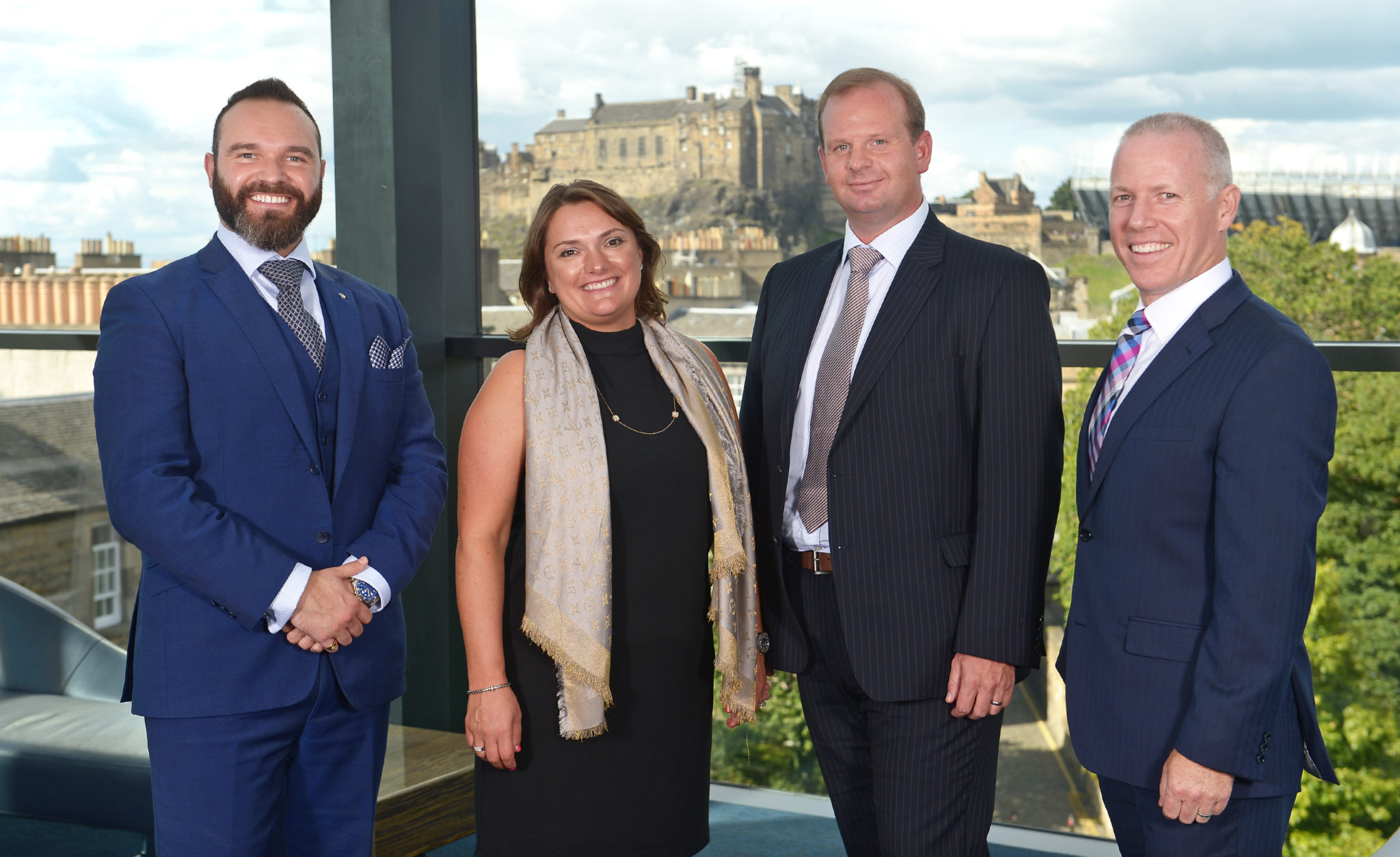Scotland’s venerable jeweller Laings has been under the ownership of a single family since 1840, but for almost 12 years, from 2005 to 2017, brothers Stuart and Michael Laing split the company in two and ran them from competing offices in Edinburgh and Glasgow. Joe Walsh, husband of Stuart’s daughter Wendy and now managing director of Laings, put the pieces back together again last year after buying out Michael as he retired. The result is the second coming of a 178 year old, £35 million business with ambitious plans to grow into a powerful nationwide multiple. WatchPro’s Rob Corder sat down with Mr Walsh to get the whole story of the past, present and future of the Laings empire.
WatchPro: Could I get a brief history of Laings, and how you came to bring the two sides of the business back together last year?
Joe Walsh: The company was originally established in 1840 by my wife Wendy Laing’s great great great great grandfather. So this is the sixth generation of the family to own the business. It was originally a silversmith set up by James Laing in 1840 who manufactured and repaired watches and clocks in Glasgow, a lot of which were for the shipbuilding industry.
Through the years there were ups and downs. It was particularly challenging during the war when industries had to switch to making supplies for the war effort. But after the war the business was taken on by Wendy’s grandfather Robert Laing, who is father to Stuart and Michael Laing.
He took the business on and moved it more towards retail. Stuart joined the business in 1969 and Robert and Stuart built it up, particularly on the retail side. Stuart set up his own shop in Glasgow called Stuart Laing’s, so there were two shops in the business, one run by Robert and one by Stuart.. A couple of years later in 1971 Michael also joined the company, which meant that it had three families to support!
Stuart had all the struggles of being a small independent jeweller and he was keen to grow. He thought to himself that, if he went over to Italy, rather than buying one piece, if he bought five then he would get better prices. That is how the [buying group] Houlden Group started.
At that time, the watch brands were not as strong as they are today. Stuart started to sell watches from this little known brand called Rolex, which is still our longest-standing partner.
Michael joined the business when it had two stores. They started again to look for growth, and they decided to open in Edinburgh. It was a real success and so Michael moved over to run it.
Glasgow and Edinburgh both blossomed and Robbie retired, leaving Stuart and Michael with 50% each of a business that owned the three stores.
They looked for growth again, and ways to expand the Laings business. One of the opportunities that came up was Parkhouse & Wyatt in Southampton, which can trace its history as a clock and watchmaker back to 1794. John Parkhouse did the deal with Michael and Stuart in 1995 and Parkhouse became the fourth store in the group. The next move was to Cardiff, where the company created a shop from scratch. They used the Parkhouse name because it was better known outside Scotland.
WatchPro: The brothers were running the whole business in all cities together?
JW: Yes, but a big moment for Stuart and Michael came when they were looking to buy a company in the south of England that was owned 50/50 by two other brothers. They went through the whole transaction, but when they got to the point of meeting to sign the deal, nobody turned up. It transpired that one brother wanted to sell and the other one did not, so the deal fell over.
That made Michael and Stuart look at each other and realise that they were in the same position as those brothers and did not want to find themselves down the line facing the same problem. So they decided to split the business. Michael took Edinburgh Cardiff and Southampton; Stuart took Glasgow, which was also where he was running Houlden from and they went on their happy ways.
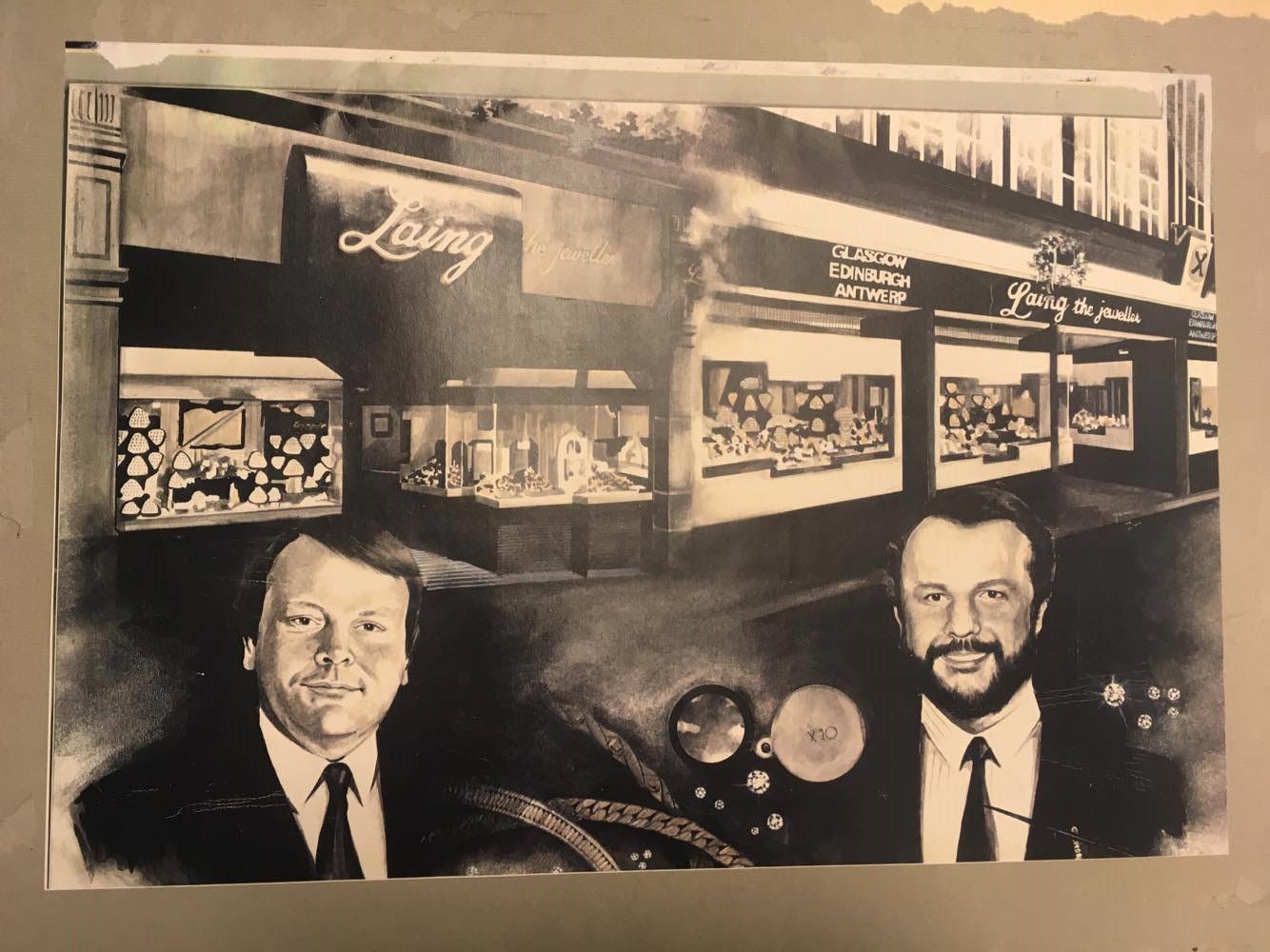
WatchPro: Was it truly a happy split? The apocryphal story is that it was acrimonious.
JW: It was a very sensible and agreeable split. Their adviser spoke to them and pointed out they could be in the same position if one of them wanted to sell the business and the other one doesn’t.
WatchPro: Where do you and Wendy come into this story?
JW: The split of the company happened in 2005, by which point Stuart had three children: my wife Wendy, her brother Simon and sister Susie. Michael too, had three children.
In terms of my background, I was from Manchester originally, and I studied engineering at Edinburgh University but I quickly realised I did not want to do engineering so I moved to London and trained as an accountant with one of the big accountancy practices. I found that a bit slow so I went into the advisory side of the business dealing with insolvency, and then into mergers and acquisitions, where I worked for 15 years.
I had been married to Wendy since 2001, and was on a very strong career path down in London at the time of the de-merger in 2005. Stuart came to us and Wendy’s brother and sister at around that time and said he was thinking about his future. He was coming up to 60 years old and he wanted to think about his succession. He didn’t mean he needed anybody to join the business immediately, but wondered whether it might happen in the future, so he could plan for it.
Both Wendy’s brother and sister both said no. Wendy and I said maybe but not now. Wendy’s career was also going well. When we moved down to London, she got a job in marketing with LVMH Watch and Jewellery working on the TAG Heuer and Zenith Brands.
We decided that we did not want to have children in London, so we moved to Manchester. I got a transfer with the company I was working for, and Wendy got a transfer with TAG and went on the road in sales as an account manager, including selling to her Dad and Michael!
Everything was going well for us both when Stuart asked us about joining the business, so while we could never say never, it was not right for us at the time. Stuart took that on board and ran a very successful business with the two stores here in Glasgow selling Patek Philippe and Rolex.
Michael was doing the same. When the company split, he took the slightly larger half of the business. It has three stores in Edinburgh, Cardiff and Southampton. Southampton was the big one because it had Rolex and Patek on the South coast. Edinburgh had Rolex, so it was a good business. Everything was steady and successful for several years for both of them.
Things changed in November 2010 when Wendy and I were asked to host an event here in Glasgow. Stuart had a diary clash and could not host a charity dinner he had committed to. We hosted a table of 10 and looked around a room filled with about 600 people. We knew a fair number of people there and we saw the opportunity to take the Laings business to a new level. We had never said no to joining the company, and that dinner got us thinking that the time was right.
The kids were four and six years old. We could see the potential to take a well-established business that could be even more successful and there was a great succession opportunity. It was a fantastic opportunity and we decided right then we would give it a go.
We approached Stuart and said we were ready and he was shocked. You could have blown him over with a feather.
WatchPro: I assume he was over the moon?
JW: He was surprised and delighted. The business was successful but not that big at the time. It was probably turning over £3-3.5 million with 18 employees.
He could see how Wendy would easily fit in with her marketing background in the watch industry, but my experience was in the financial sector and he was not sure. He said we should start slowly and see how things progressed. I was more keen to get involved straight away and after that, he took the risk and said come on up and let’s go.
At the time, the gentlemen who owned the corner store in Argyll Arcade was beyond retirement age and was still dragging himself to work every day. Stuart saw him and suggested he sell up and retire. He agreed and so the first thing Wendy and I did when we came up to Glasgow was to buy the corner and knock through from our existing store next door. That also gave us an upstairs space.
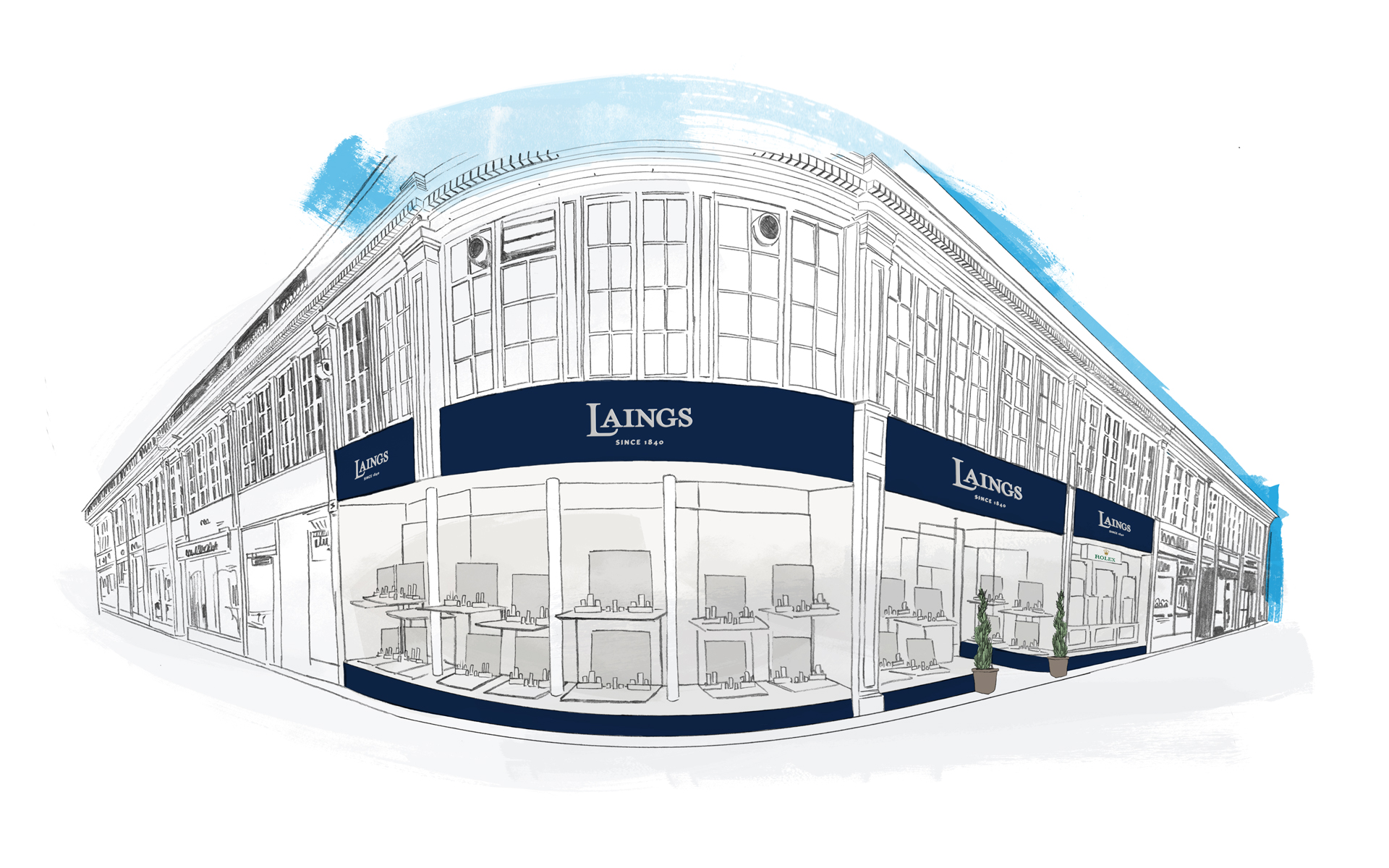
WatchPro: So before you had half of the space downstairs, and none of the space upstairs?
JW: We added what is now the jewellery window, plus all of the upstairs. We went to the bank to borrow the money to buy the other business, and they were good enough to lend it to us.
Taking stock, I knew that the existing space was turning over £2 million, the one we had just bought was turning over half a million, so our forecast for the first year following the acquisition was £2.5 to £3 million. We ended up doing £5 million; more than double.
Adding the unit had a halo effect on the existing business because we were able to give more space to Rolex and Patek Philippe. Also, we were fortunate at the time because the number of Rolex agencies in Glasgow went from three to two. We ended up being the only Rolex agency in the Argyll Arcade because the other agent [Watches of Switzerland] moved out from here and opened up the road.
From then we were seen as the premium watch destination. Breitling, Jaeger-LeCoultre, Chanel, Panerai came on board and we created a bigger brand portfolio.
We were trading successfully from this store here and a smaller unit in the arcade. One of Wendy and my first projects was to turn that other store around. That came down to people. We had to get the right team in place, and that required some tough decisions letting some people go who had worked for Laings for a long period of time. While it was a fairly static business, they were fine, but we were looking to grow and we needed the right people in place.
Also, we were putting this business on more of a 21st century footing. We were still working off paper till slips, so we moved to a point of sale and moved all the employees onto that platform as well.
The opportunity came to buy a third store in the Arcade, and we were in a mode to take any opportunity like that and to make it work. We first tried to turn it into Robert Stewart store, which was an old brand that operated years before, but we ended up realising it was crazy to market two different brand names. The idea was that Robert Stewart would operate more at the value end of the market, but it became clear we were able to sell bigger diamonds so after a couple of years we re-branded it to Laings in around 2013.
WatchPro: Stuart was still active in the business at that time. When did that start to change?
JW: Stuart is still active in the business and is chairman. We started the succession planning around 2014. Stuart had worked in the industry for a long time and he wanted to take a small step back. We went through some corporate restructuring that allowed succession to happen in 2015 so that Wendy became the sole shareholder of the company.
From 2014 to 2017 we looked at various opportunities. We got to a stage here where we had built the infrastructure, improved the team, launched a proper website, put the right structure in place. All of that created a platform from which we could grow. We looked at opening a store in Carlisle, we looked at taking over Pykes in Chester, Birkenhead and Liverpool when that went into administration in 2014. We were dealing with the administrator but it did not work out.
We looked to acquire another retailer in 2016 but again that didn’t work out. When that deal fell over, it stopped us and we questioned whether that was the sort of expansion we really wanted or would work for us. We had built the business from the point at which we got involved from £3.5 million turnover with 18 employees. Last year we turned over £15 million [year ended May 2017] with 65 employees. That has been quite a jump and made it a nice size business and relatively manageable for Wendy and myself.
WatchPro: What was Michael Laing’s business doing at the same time? What was his story?
JW: Throughout that whole time, Michael’s business was trading entirely separately. He traded under Laing in Edinburgh, while we were Laings in Glasgow. There have been certain things we’ve not been able to do in terms of marketing, promoting ourselves in the different territories.
Jonathan Payne came into his business in 2011 and became managing director. Since then the company has been on a very strong growth path. It was doing six or seven million at that time, and now it is trading at around £19 million as well.
WatchPro: I think the last financial year for which I can get accounts for all companies in the newly merged business was 2015-16, when it totalled around £23 million.
JW: To the end of the latest financial year, Laing is looking at almost £20 million, and we did £15, so if you add the two together, it is trading at around the £35 million turnover mark for the latest year.
The big thing for Laing was the move from Frederick Street in Edinburgh to George Street in 2015. That took it from a small store to a big store, which worked really well. Jonathan was in place as managing director; Michael’s son Richard was involved in the business. Jonathan had performed a similar role to me, working in the background getting the infrastructure right and modernising the business so that it is really running well.
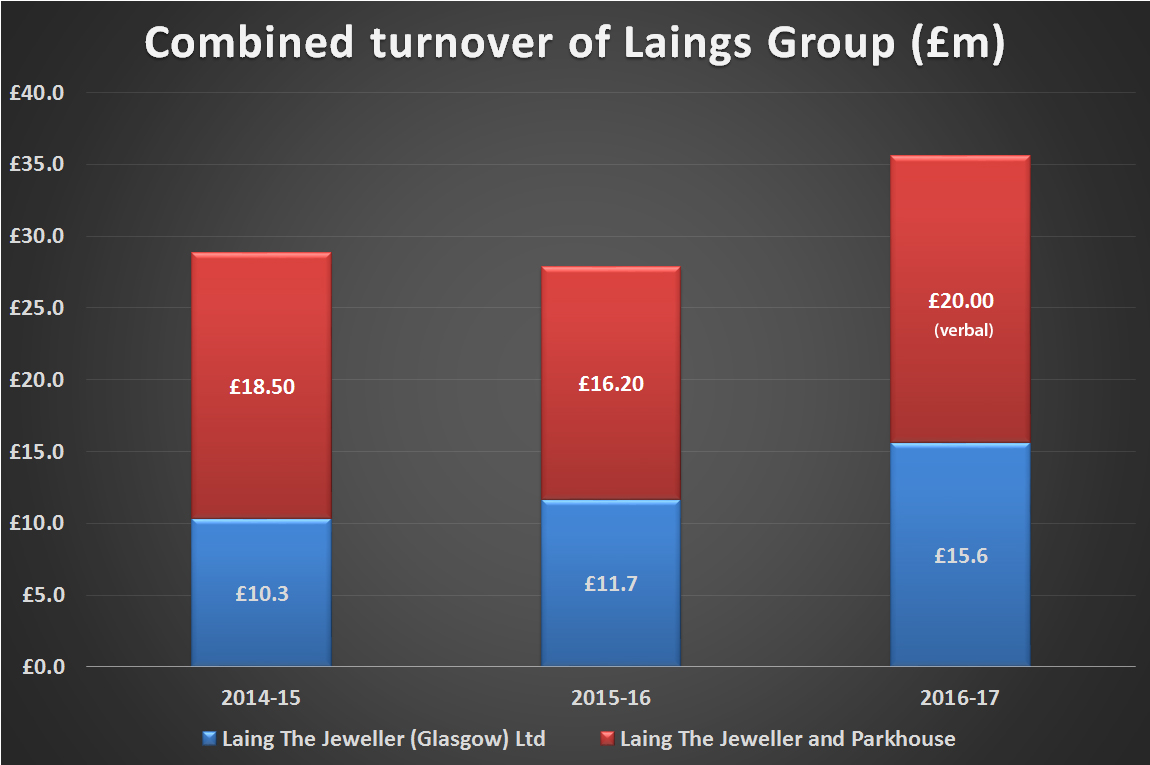
WatchPro: When and why did you start looking at bringing the two businesses back together?
JW: In around March this year we started to really look at it seriously. We had a conversation in Basel. I had always got on really well with Michael personally, but the two businesses were kept very separate and people played their cards close to their chests. I met Michael at Basel and we agreed to meet again soon after the show. I told him I would bring my accounts and he should bring his, and we should have a chat. That is what happened.
He was 65 last year and had various succession options he was looking for his business. I had already spoken to a bank before that meeting and had an idea of what we could afford and so I made an offer.
Michael went away and I didn’t hear anything for a couple of weeks, then out of the blue I got a call and he said: “The business is going to the right home, and he thought bringing the family business back together was fantastic”.
WatchPro: I recall writing a number of stories about changes taking place. There was a lot of activity last year, so it came as even more of a surprise that the company was suddenly being sold.
JW: That’s right, as we were going through this process Laing was making a major move into the West Quay shopping centre in Southampton. I was thinking at the time, do I wait until that new shop is open? Do I wait until after Christmas? Or do I just get on and do it? It was due to open in the first week of September, and I was getting through the process The plan was to complete the acquisition at the end of that month. As it turned out, everything was going smoothly over the summer so we managed to get it done by the end of August.
Through that process we had to keep it hush-hush with the exception of Jonathan Payne and Michael’s son Richard being involved.
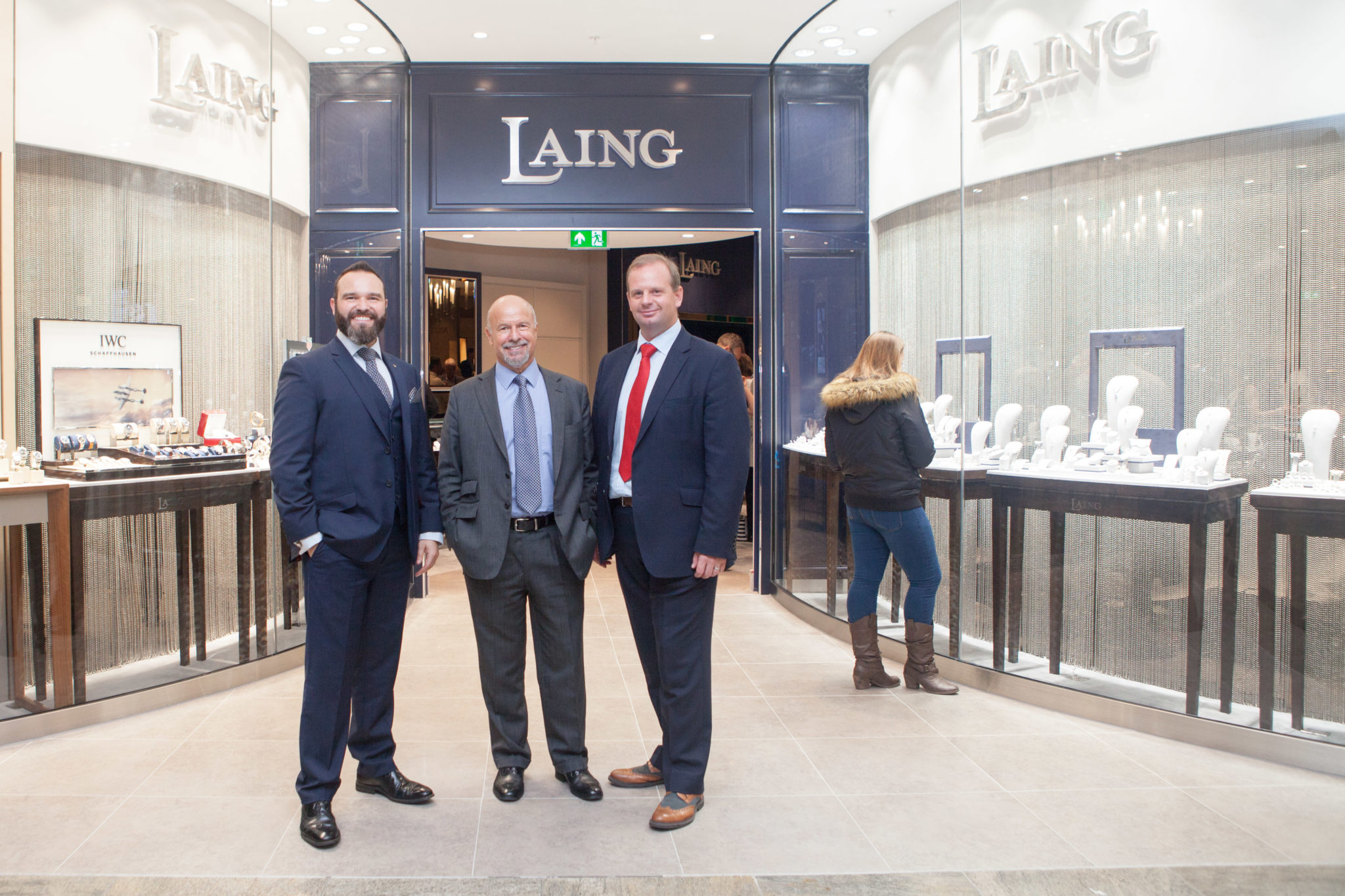
WatchPro: Did this come as a shock to Jonathan and Richard?
JW: There was a bit of a journey for Richard and Jonathan to go on when this acquisition came out of left field for them. Our philosophy was to create a company that took the best parts from both businesses. It was not an attitude of us taking them over.
Jonathan and Richard quickly came on board and we could really start planning for the future. Richard was and is Mr Edinburgh, so having him there as a director is great, and he is very happy with the new world.
WatchPro: Normally after an acquisition of this kind you would find ways of making the company more efficient and profitable. Are you at that stage yet?
JW: We had two head offices, one in Glasgow, one in Edinburgh. We had good people in both offices and we looked at whether we could keep them all for a while, but it quickly became apparent that we were not merging anything; we still had two separate companies and that was not what was needed going forward. We needed to bring everything under one brand, we needed one communications team with one message.
I looked at both offices, but only Glasgow had the space to grow so we decided to make this the headquarters. We then had to go through the difficult process of making some people redundant in Edinburgh. That was a tough time but it was for the best.
WatchPro: Did anybody move from Edinburgh to Glasgow?
JW: Yes, a fair number of them have, but we had to make some tough decisions to cut some of the team. We now have the right team at head office and around the country. The staff get it and they feel positive about the new company.
Watchpro: I am interested in the psychology of this acquisition. I would be amazed if the teams under Stuart and Michael didn’t obsess about how well each other were doing because that sort of friendly rivalry can be very useful to motivate people. Suddenly, your team has acquired the rival team. How have they reacted emotionally to that?
JW: We had a honeymoon period, and then we got to the tougher bit. We tried a few things at the start, such as bringing the other managers here to Glasgow and taking our managers to our new stores so they felt more like one team. But that seemed to ruffle feathers on both sides so we really let the stores go on as usual and help each other out sharing stock and let the relationships grow naturally.
WatchPro: You didn’t resort to paintball and go kart racing team building days?
JW: We are working 24/7 so we can’t take everybody away at the same time. We do have planned management meetings now, and we started that very soon after the acquisitions, where Jonathon runs a two day management workshop. That has gone from five people to 15 people now.
We knew, particularly with the key Christmas trading period, we would focus on keeping things as normal as possible. Any future plans could wait until the new year. Trying to impose new ways of doing things would not work to ensure a smooth Christmas trade.
So, it was unsettling, but a key question for me was who would anyone resign? And it turns out nobody did.
WatchPro: This may be exposing my personal prejudices, but in my experience people look at these things not in terms of the strategic objectives of their employers, but in terms of what’s in it personally for them. So, if the company is stronger and they are happy with their wages, working conditions and career prospects, not much else matters.
JW: Absolutely. We didn’t change much, we have just taken the best practices from both. We have not just said it is my way, or Jonathan’s way. We have listened to and acted on suggestions from managers across the business.
WatchPro: I couldn’t help noticing earlier when I described this as a merger, you corrected me that it is an acquisition.
JW: It is very much an acquisition because we bought Michael’s business and he has retired. We talk about it as a merger because we are bringing back together a business that was apart for 11 years of its 178 year history.
WatchPro: One of the things that seems miraculous when we are talking about a four month time frame from start to finish of the acquisition, was the luxury watch brands waving it through so quickly. We all know that these deals can fall apart without the blessing of key players.
JW: The brands were made aware straight away, and that has always been the case with these things. When we looked at Carlisle, when we looked at Pykes and other acquisitions, we involved the watch brands straight away because if they don’t support these moves, they don’t work and we would just be wasting time and money. The great news with this deal is that not a single watch brand has left us in any of our stores.
The brands appear to be supportive of some consolidation in the smaller independents. They probably have to spend the same amount of time dealing with a small single store account as they would do dealing with a much larger business. Plus I am sure they do not want to be dependent on one customer, so there appears to be a good opportunity for businesses like the Watch Gallery [now Bucherer], Pragnell, the Houlden members, the Masseys, the Robinsons, to be professionally run and grow.
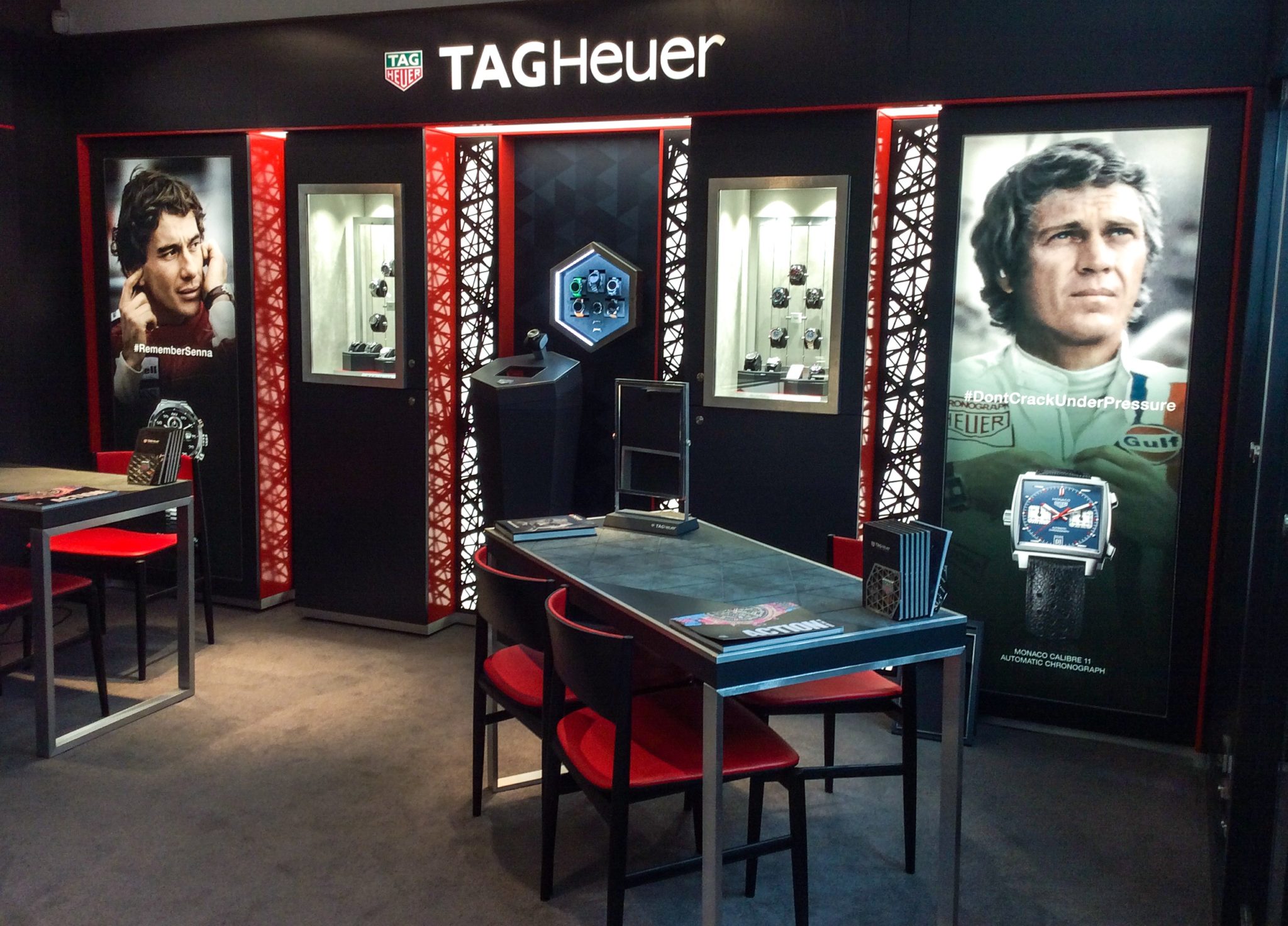
WatchPro: So this deal was quickly and easily waved through?
JW: It is never easy. You have to go through a process.
WatchPro: Is there any talk of whether you might get more watch brands in more of your stores?
JW: This moves us towards this year’s plan and our future vision. In this industry you have a choice of either opening new retail sites or acquiring. I mentioned before the importance of our close relationships with our partners: with Patek Philippe, Rolex, LVMH and Richemont. We are very keen to have all of those represented in all our stores, but they are happy with their existing partners.
Rolex, Patek, LVMH and Richemont will get asked by retailers every day whether they can have an account in a city, and they are honourable to their existing partners. Most accounts are well-established in most cities. There will always be one or two changes, but the quickest way to grow is to buy businesses rather than open new shops. Pragnell is a rare exception, they did a great job opening up in Mayfair.
WatchPro: Describe the business today, going into 2018.
JW: This year is very much about consolidation for us. We have taken on debt to do the acquisition, and we need to start paying that down. We need to merge all our systems, so things like one website, one stock system. But there are always opportunities knocking on the door and we are looking at two or three new stores.
WatchPro: Are those opportunities green field sites or acquisitions?
JW: Probably not acquisitions for a while because of the leverage we have right now. New stores are easier to do, and we are looking at a few opportunities. We are also interested in more mono-brand boutiques or major shop in shops, which is a growing part of what some of the brands want to do. They are looking for more franchisees for those.
Two big things for us this year are a major shop re-fit here in Glasgow. That is major for us. The other thing is building a national brand. We cover Scotland, Wales with Cardiff and Southampton. That gives us an opportunity to put Laings on a national platform, particularly with the online side of the business, which is just growing and growing.
You are going to see a lot more advertising this year with Laings in national campaigns like in The Telegraph. We have big marketing spend allocated to that. Previously, we had a bit of Glasgow advertising, a bit of Edinburgh, a bit of Parkhouse down South. Now, with all stores trading as Laings, we can go national with our advertising.
WatchPro: Do you not feel a little bit outside of the hottest markets with your showrooms at the extremities of the country in Scotland, Wales and the South coast? Surely London is where it is at for a company as ambitious as Laings?
JW: Absolutely, but that is where we are at the moment. Edinburgh is the second biggest tourist market to London and we do get tourist business there. The benefit to us with where we are is that the partners are pretty fair with allocation of product, particularly with more exclusive stuff. So while waiting lists for certain models in London might be hundreds long, we might have availability. That means we can look after our customers a little better.
WatchPro: You spoke about being a national brand, but would you agree that today you are viewed more like a collection of independents known only to local customers?
JW: I don’t expect everybody in every house to have heard of Laings, but I do want brand awareness at the high end. Until three months ago we were having to promote Laings, Laing of Edinburgh and Parkhouse. Having Laings across all four cities will make us more of a recognisable brand.
WatchPro: That could be a major game-changer. You spoke about spending 2% of group turnover on advertising; if that’s 2% of £35 million, you are talking about a budget approaching £1 million.
JW: Absolutely. Web exposure is very key to that.
WatchPro: How was the Christmas trading period for you?
JW: It was alright. I think we fared better than the overall market, from what I am hearing. Anecdotally I am hearing the market was 10-15% down in our part of the market; it really was a tough Christmas. We just about did the same as 2016, which I was pretty satisfied with.
There were various factors making Christmas tough this year. Obviously there is the economy and squeeze on incomes, but a big one was Christmas day falling on a Monday, which has not happened for 11 years. That meant a lot of people finished work on the previous Friday, so there wasn’t a 3-5 day build up to Christmas like you get in some years.
WatchPro: How has Argyll Arcade here in Glasgow evolved since you took over running Laings? It is an incredible destination for watches and jewellery, but does that concentration make it easier or harder because it is so competitive?
JW: The Argyll Arcade has 31 jewellers under one roof, which makes it incredibly competitive. Yes, everybody has their own market segment, but everybody is trying to push into each other’s segment. At the end of the day, this is a diamond arcade. Yes, we have watches, but if you look at the units sold out of here, it is diamonds, diamond rings. In terms of units, there are more diamonds sold out of the arcade than watches. In terms of value, I am not sure.
WatchPro: How do you see things more long term? How might Laings look in 10 years’ time?
JW: We really only look about three years out, and I do not see us sitting in three years in only our current locations. I can only see growth, be that by acquisition or by setting up new stores. I do think we will see more acquisitions in the coming years.

